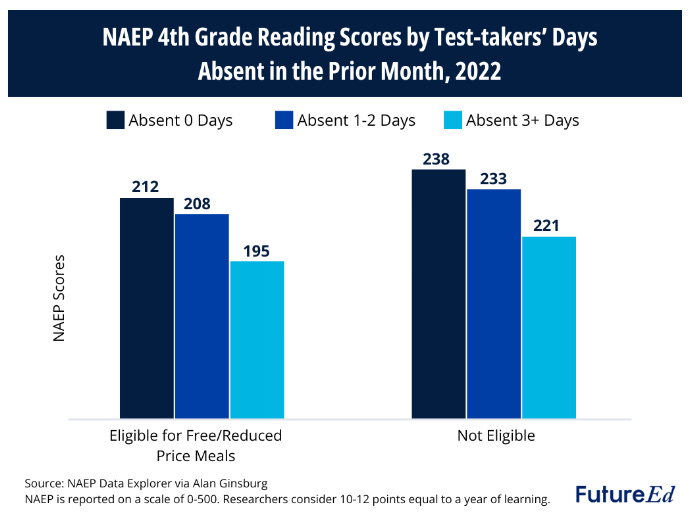Broken habits
Chalkbeat goes inside a Chicago classroom to show learning has not returned to normal.
[I]nside Nikhil Bhatia’s classroom, the evidence was on the whiteboard, where the math teacher was shading in slices of a pie to illustrate how to find a common denominator. That day, his seventh graders were working to add and subtract fractions — a skill students usually learn in fourth grade.
Maybe you learned this before, Bhatia began. “Or, during the pandemic, you might have been on Zoom,” — a few students laughed as he dragged out the words — “put your screen on black, went to go play a couple video games. Snap if that sounds familiar?”
One potential root cause: The pandemic broke norms and cultural habits, such as regularly showing up for school.
In England, parents are questioning the value of daily school attendance. In the US, newly published survey research finds a plurality of parents, and a majority of those identifying as politically liberal, support shifting to a four-day school week to help retain teachers.
EdNavigator founder Tim Daly calls on schools to restore the culture norm of regular attendance.
As a country, we transitioned to at-home learning in March 2020 and in critical ways, we’ve never transitioned back. It’s time to leave behind some of the new pandemic habits we picked up because they are no longer necessary or healthy. While students may argue that they can learn just as much from home as in school, piles and piles of evidence tell us this is not so. When kids don’t show up for school, they fall behind.
As long as chronic absenteeism remains normalized, we will not reverse the massive drops in achievement that have occurred in the past decade. In fact, new analysis (see graph below) suggests that missed school might be one of the driving factors behind lower test scores, which would explain why even states that returned to in-person learning sooner, such as Florida and Texas, still saw their performance levels decline. They won the battle to re-open. They lost the battle against chronic absenteeism.

The question now is whether schools can build effective connections with their students. Right now, only four young people in ten report feeling like they’re a part of their school’s community.
State and local spotlights
Some state and local stories provide insightful microcosms of national issues.
Ohio: New test results show post-pandemic academic recovery has slowed.
Oregon: The state has prescribed a new grading policy:
Starting this term, every public school student in Oregon is supposed to be graded solely by whether they have mastered the academic skills covered in class.
Turning everything in neat and on time, bringing back signed forms and racking up extra credit won’t boost grades. Turning assignments in late, skipping homework and talking during class won’t hurt, as long as the student can demonstrate the key skills and knowledge covered in the course.
San Francisco: Enrollment at one school has dwindled to just 11 students. But local officials haven’t closed it.
Missouri: Families can apply for $1,500 grants to pay for tutoring and enrichment of their choice.
Denver: Middle schoolers can receive $1,000 grants to pay for music, art or other enrichment programs.


